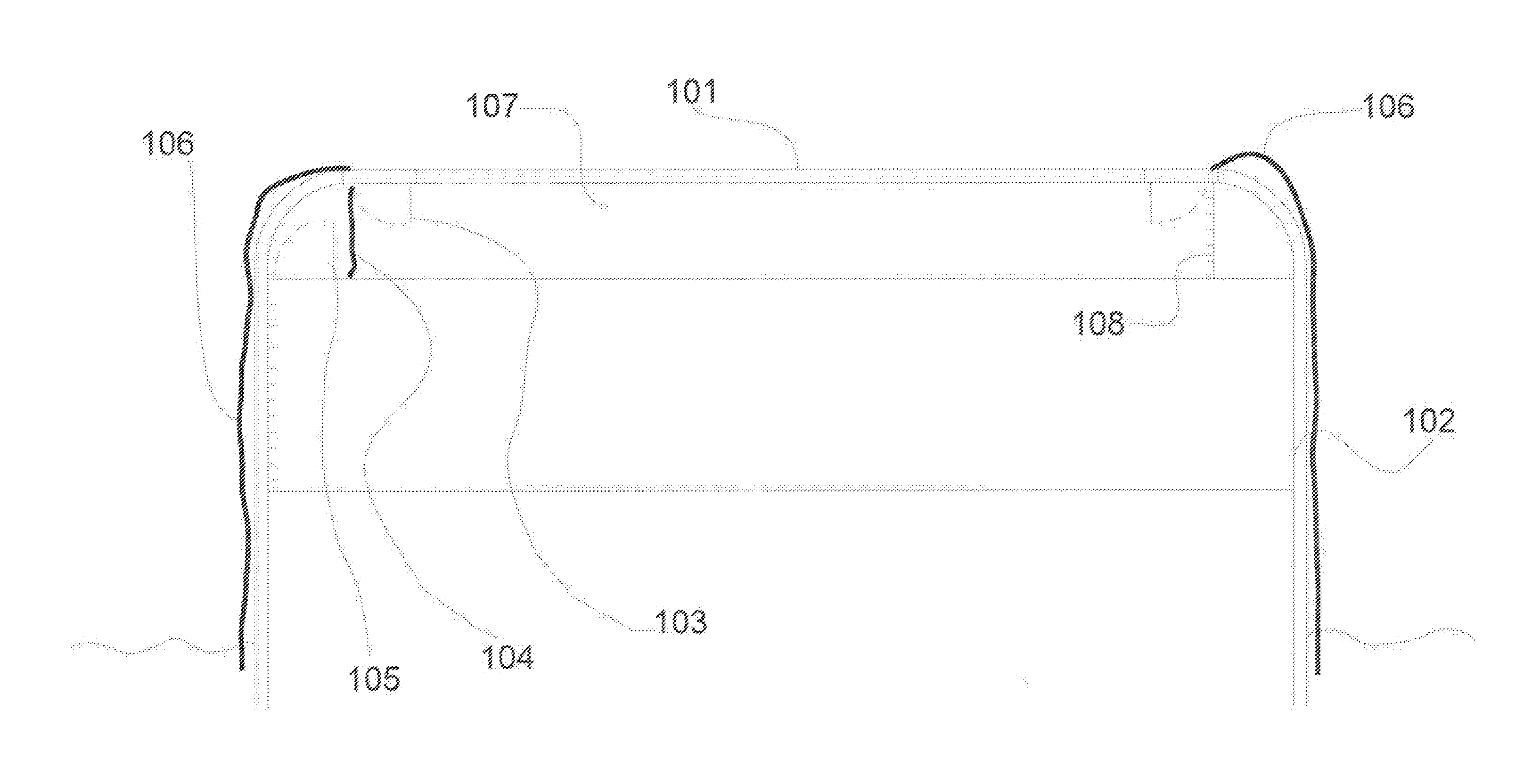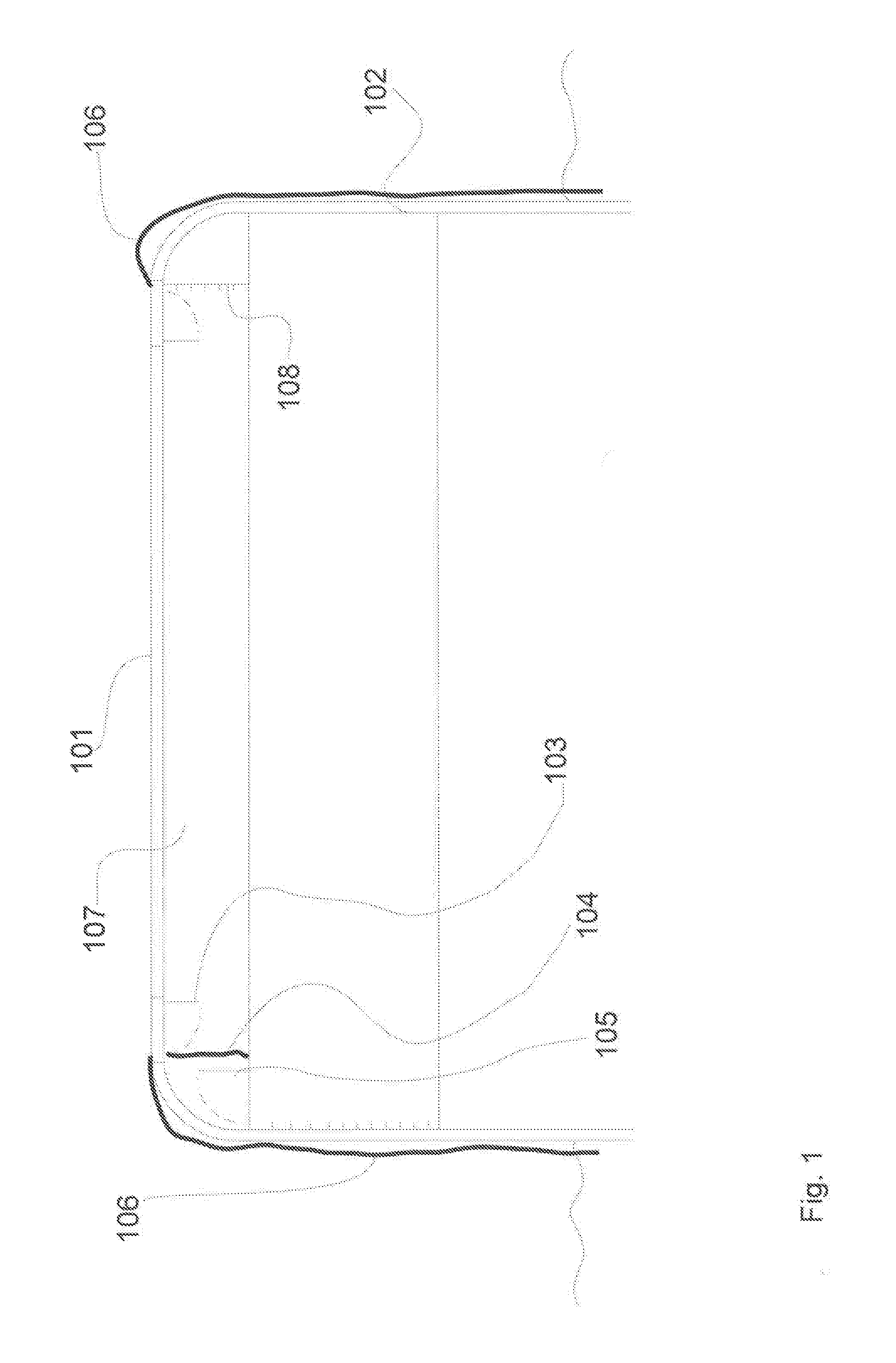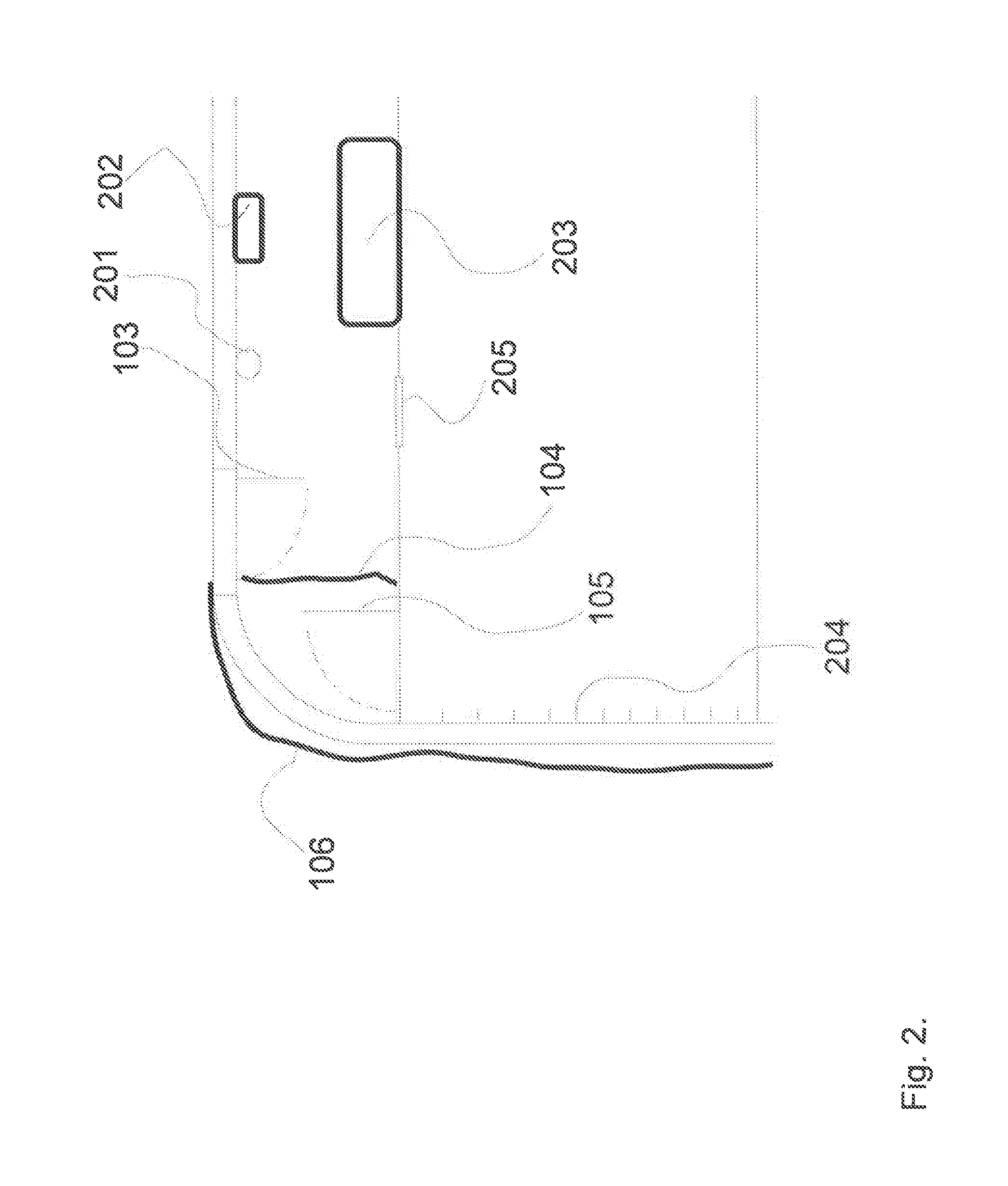System for evacuation of personnel from a capsized vessel
a technology for evacuating personnel and capsized vessels, which is applied in the direction of life-saving, vessel safety, and hull double bottoms, etc., can solve the problems of people trapped inside the boat, difficult to use, and people on board cannot take advantage of the common emergency exits in the ship, and achieve the effect of easy descent into the water
- Summary
- Abstract
- Description
- Claims
- Application Information
AI Technical Summary
Benefits of technology
Problems solved by technology
Method used
Image
Examples
Embodiment Construction
[0015]FIG. 1 is an embodiment of the present invention. It is shown a cross section of the fuselage 101 of a vessel. It can be seen that the hull comprises an inner 102 and an outer part 101 with a layer of air in between. This is a common solution in large vessels and is called watertight bulkheads. This is to prevent water from entering the vessel if the outer hull 101 is damaged and has sprung a leak.
[0016]Furthermore, we see that there is an escape hatch 103 in the outer hull, which opens into the evacuation room 107. This is in order to ensure that it is possible to open the escape hatch 103 when the ship lies heavily in the sea and the hatch 103 is partially under water.
[0017]The escape hatch 103 is not opened until everybody has put on the rescue equipment that is stored in the evacuation room 107. Everybody will therefore be prepared for the challenges that one may encounter. The point is that anyone who stands in the evacuation room 107 must be prepared for the intrusion of...
PUM
 Login to View More
Login to View More Abstract
Description
Claims
Application Information
 Login to View More
Login to View More - R&D
- Intellectual Property
- Life Sciences
- Materials
- Tech Scout
- Unparalleled Data Quality
- Higher Quality Content
- 60% Fewer Hallucinations
Browse by: Latest US Patents, China's latest patents, Technical Efficacy Thesaurus, Application Domain, Technology Topic, Popular Technical Reports.
© 2025 PatSnap. All rights reserved.Legal|Privacy policy|Modern Slavery Act Transparency Statement|Sitemap|About US| Contact US: help@patsnap.com



